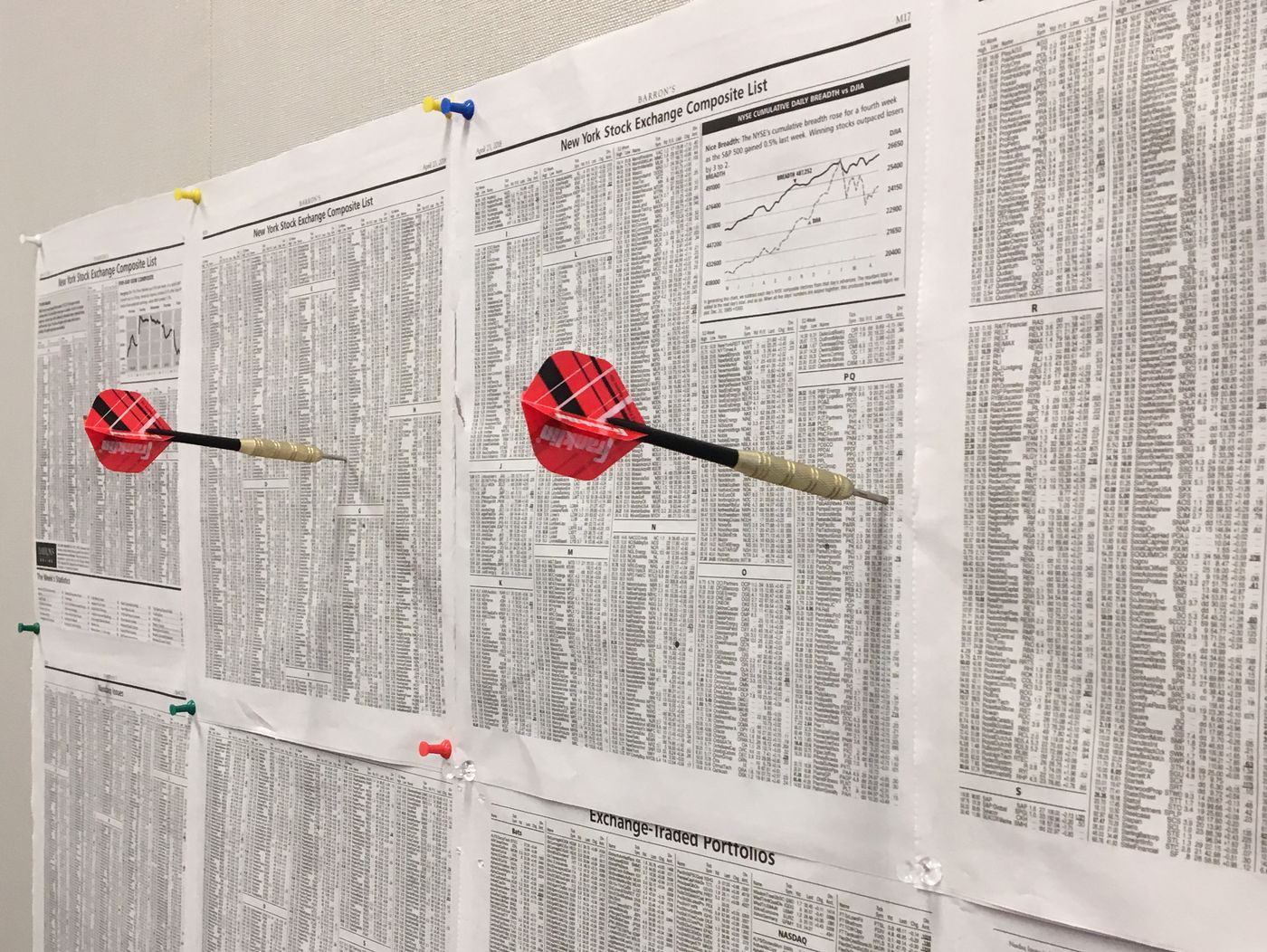Words rarely heard from star fund managers: “I just got lucky.”
Some might blame poor timing or unforeseen events for a lousy year, but success is somehow never an accident. It most certainly was for Heard on the Street’s columnists as we once again trounced the best and the brightest in the hedge-fund world. There are lessons here that could boost anyone’s stock portfolio.
Repeating an exercise from 2018, Heard’s columnists took a cue from Burton Malkiel, author of the investing classic “A Random Walk Down Wall Street,” and threw 12 darts at stock-market listings a year ago (he suggested using blindfolded monkeys). We competed against the fund managers presenting their best ideas at last May’s Sohn Investment Conference in New York City. Both the stocks and the type of bet, long or short, were beyond our control.
Once again, the pros got schooled by randomness. The first time around, they lagged behind the dart tosses by 22 percentage points. This time, it was 48 percentage points, though the way that was accomplished certainly isn’t for the faint of heart.
Some of the companies—such as Maui Land & Pineapple—behind our 80% return were totally new to us. But we knew right away that others were on shaky ground. One, software company Semantix, was later delisted and plunged by more than 97%. Another, NGL Energy Partners, survived and climbed by 117%. A third, Western Alliance Bancorporation, was beaten down by last year’s regional-banking jitters yet enjoyed a huge recovery. Unfortunately, it was one of our two short bets and cost our portfolio dearly.
The biggest takeaway from our picks is that, while there were a few other winners, a single stock, insurer Root Inc., was responsible for all our net gains. That hews to reality. A long-term study of U.S. stock returns by Hendrik Bessembinder shows that half of all excess returns came from just 83 companies. Most stocks underperform risk-free investments, which is why diversified portfolios not designed to shoot the lights out are more prudent.

The Sohn panelist picks all sounded like a good idea at the time, and many were for the one-year period tracked. David Rosen of Rubric Capital pitched Talen Energy, a nuclear-power provider that was emerging from bankruptcy and rode a wave of enthusiasm for the power source, returning almost 129%. In second place was Andrew Weiss of Weiss Asset Management, who picked a trio of Korean companies. The best was SK Square with a total return of 81% in dollar terms. By contrast, Divya Nettimi’s pick, Japanese electronics and entertainment giant Sony Group, declined 15%.
Heard’s columnists won’t be going into the fund-management business because we can’t claim that it was “all in the wrist.” A few blowout years have been plenty, though, for mutual-fund aces including Cathie Wood or Bill Miller, who later stumbled. Fund management’s dirty secret is that investors’ actual dollar returns are even worse than active funds’ stated returns which, on average, trail behind simple index funds. Especially in the case of stars, money tends to rush in near a peak and then leaves once the bloom has come off the rose, crystallizing losses.
Dart throws, if done right, really can beat the market in the long run, according to a study by Towers Watson and Research Affiliates, “The Surprising Alpha From Malkiel’s Monkey.” The likely explanation is how they were weighted since regularly rebalanced portfolios of small stocks have beaten large indexes over time.
Re-creating random picks on your own takes extraordinary discipline, though. Would you stick with a company known to be in trouble? Luckily, that isn’t necessary. With only a small bump in measures of volatility such as standard deviation, equal-weighted index funds—as opposed to the more common variety based on companies’ sizes—give greater exposure to risky outliers.
An equal-weighted index of U.S. stocks maintained by MSCI has modestly beaten the equivalent capitalization-weighted index over nearly 30 years and might be due for even more as it has become cheap in the “Magnificent Seven” era. At the end of April, the equal-weighted index had a price/earnings ratio 14% lower than the capitalization-weighted version.
But even a vanilla index fund that costs very little contains those needles in a haystack. Trusting fund managers to find and then keep owning them might result in frustration. S&P Dow Jones Indices shows that outperforming mutual funds in one period have very poor odds of following up. In 2020, for example, only 43% of U.S. stock mutual funds beat their index. Of that group, only 2.5% kept it going for the next two years.
Luck has a way of running out.







